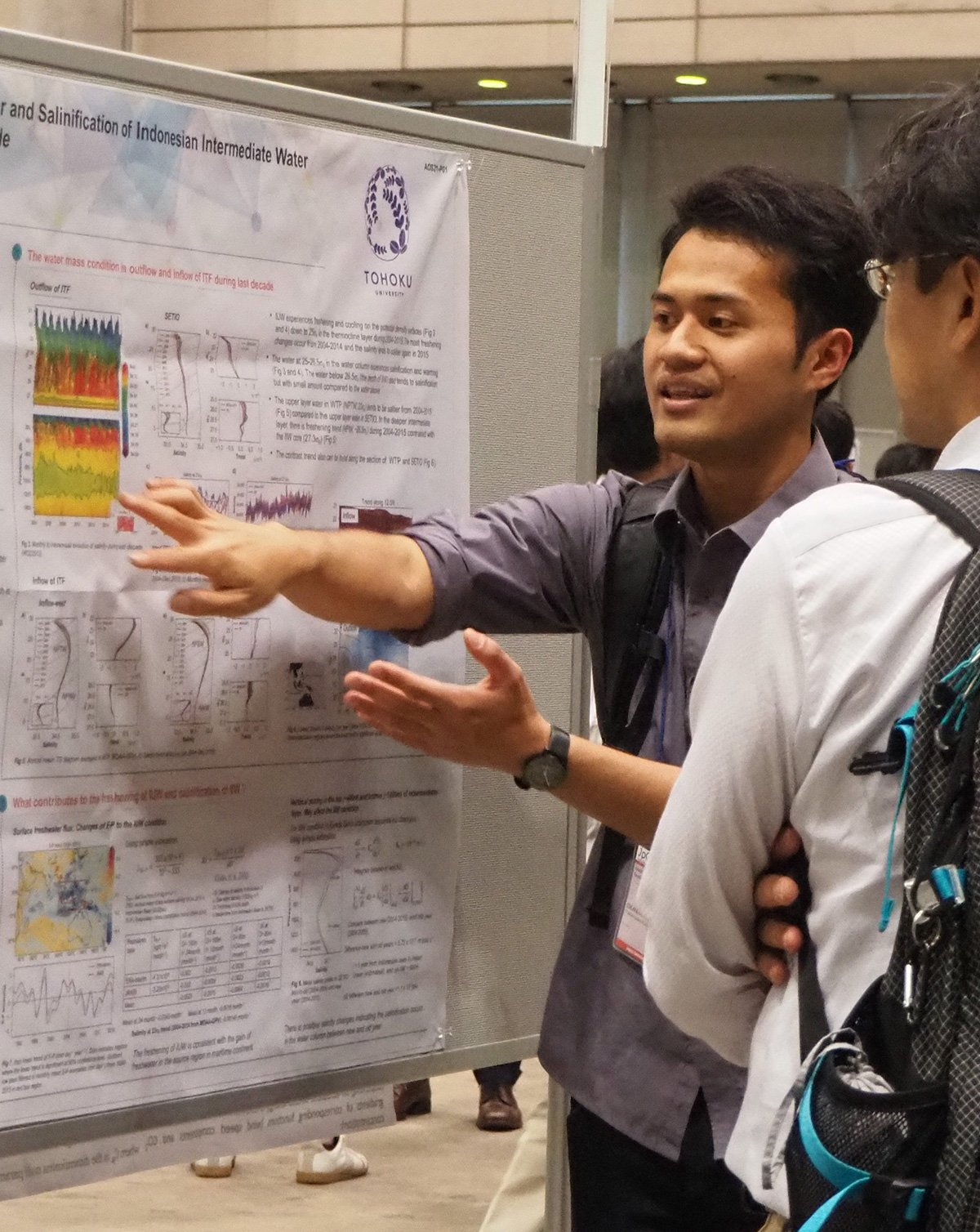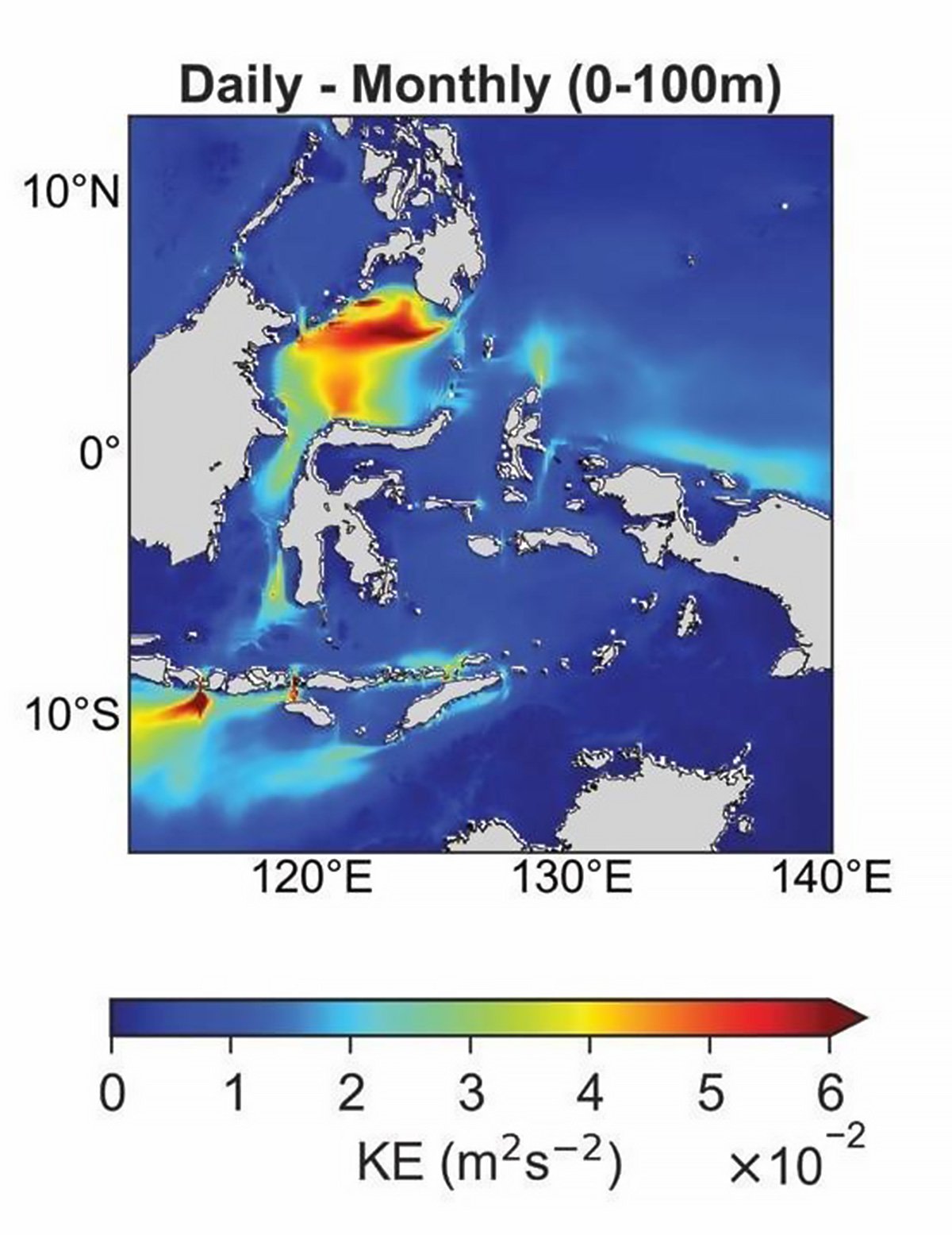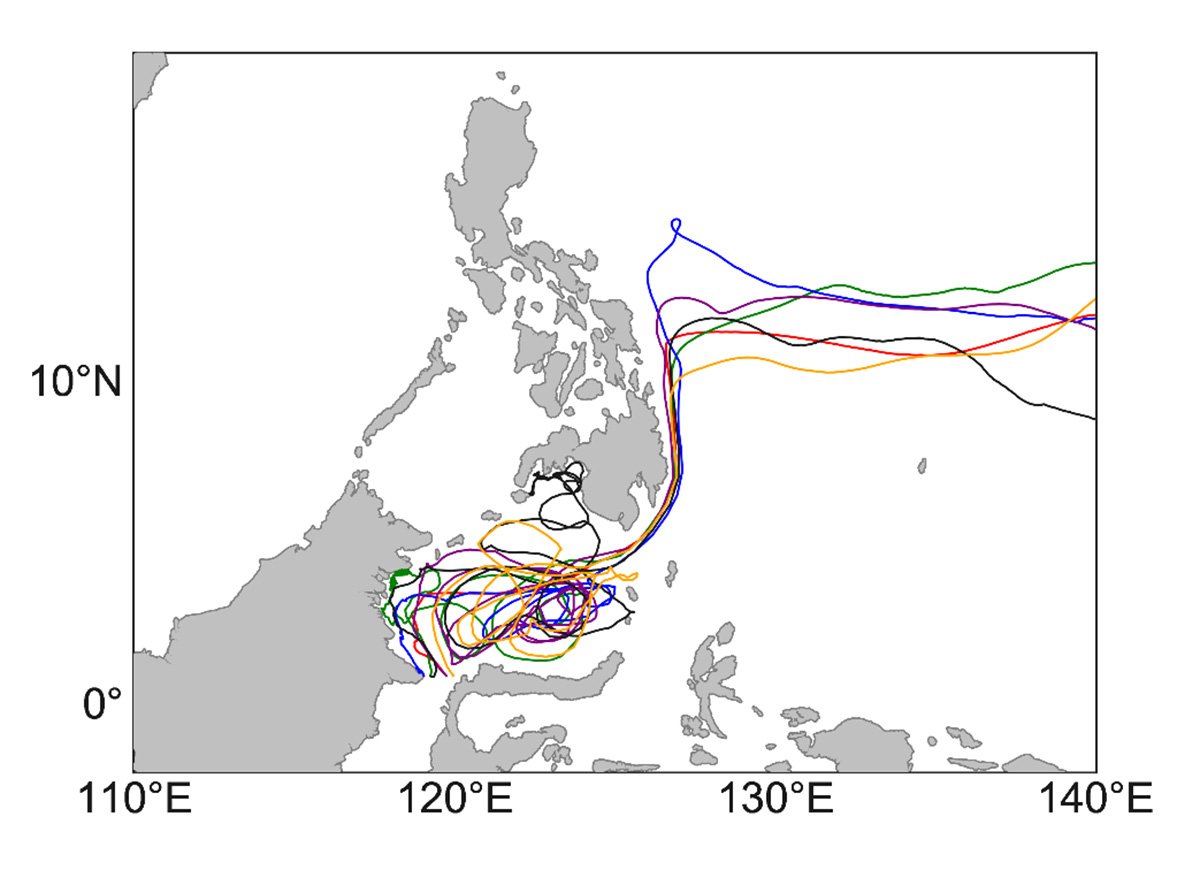Water from the Pacific Ocean flows into the Indian Ocean via the Indonesia Archipelago Seas thanks to a vast network of currents dubbed the Indonesian Throughflow (ITF). The ITF acts as a heat and moisture conveyer belt, transporting warm and nutrient waters. Yet the ITF is neither a steady nor a straight path, but experiences fluctuations and turbulence as it passes through the various sea regions, straits, and passages.
Currents can sometimes formulate into circular motions, forming a whirlpool-like phenomena. These are known as eddies, and they are prominent in areas where there are strong gradients in temperature, salinity, or velocity. Their rotating motion can cause nutrients from the colder, deeper waters to rise to the surface.
To investigate the role eddies play in determining the path of the ITF, an international research group has harnessed a high-resolution ocean general circulation model that reproduces eddies. The group featured researchers from Tohoku University, JAMSTEC, Kyushu University, the University of Hawai’i at Mānoa, and the ³Ô¹ÏÍøÕ¾ Research and Innovation Agency of Indonesia.

Details of their research were reported in the Journal of Geophysical Research – Oceans on May 14, 2023.
The group’s model enabled them to calculate the transport of simulated particles in a daily-averaged flow field with eddies and a monthly-averaged flow field with smoothed eddy currents, respectively, and estimate the flow rate transported by the simulated particles.
In the Sulawesi Sea, which is situated along the northeastern coast of Borneo and also borders the southern Filipino island of Mindanao, the Sulu archipelago, and Sulawesi Island’s western coast, the group found that large flow fluctuations occur, and seawater circulates over a wider area for an extended period. Seawater also rises from the middle to near the surface, which may cause significant changes in the water when flowing through due to turbulent mixing.

On the eastern side of Sulawesi Island sits the Banda Sea, which surrounds the Maluku Islands and borders the islands of New Guinea and Timor. Here, the current fluctuation is slight, and the model predicted negligible influence from the eddies on the Indonesian Current.
“Our results indicate that the path and residence time of the ITF, along with the mixing process of seawater, must be appropriately reproduced by an ocean general circulation model to gain further insights into and better predict sea surface temperature fluctuations in each region of the Indonesian Archipelago,” points out Toshio Suga, professor of physical oceanography at Tohoku University’s Graduate School of Science and co-author of the paper.
Global warming’s progression is expected to change the ITF. Such changes could have profound repercussions for water temperatures in the Indonesia Archipelago and the Indian Ocean, El Niño and the Indian Ocean Dipole, and the frequency and scale of marine heatwaves that affect marine ecosystems and local weather. Therefore, it is vital to predict accurately such phenomena.
Looking ahead, the group hopes to improve the accuracy of future predictions by clarifying the degree to which eddies impact the path and residence time of the ITF, something quantitatively linked to the determination of water temperature in these areas.

- Publication Details:
Title: Effects of high-frequency flow variability on the pathways of the Indonesian Throughflow
Authors: Mochamad Riza Iskandar, Yanli Jia, Hideharu Sasaki, Ryo Furue, Shinichiro Kida, Toshio Suga, Kelvin J. Richards
Journal: Journal of Geophysical Research – Oceans
DOI:






